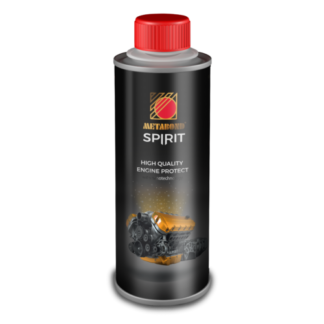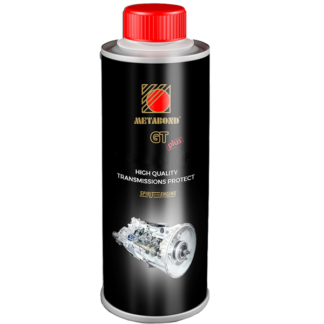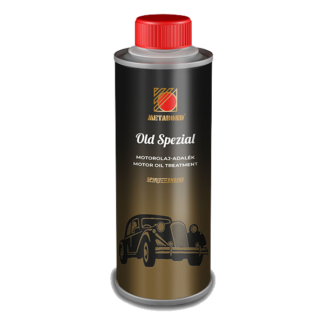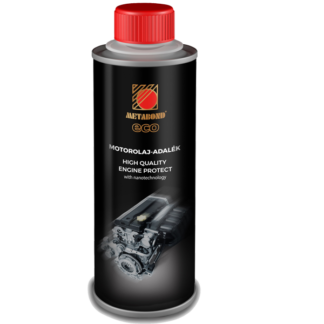The development and proper application of modern lubricants have significant economic impacts. Optimally selected lubricants lead to substantial savings in energy, reduced wear, shorter maintenance periods, and longer repair intervals. These savings can be quantified in billions in any industrialized country. The properties and quality of lubricants depend on the origin and viscosity properties of the base oil used, the process parameters applied during manufacturing, and the type and quantity of the additives mixed into them.
Technical Motivation for Additive Use
In most cases, the desired properties of lubricants cannot be achieved using only one type of additive. Mixtures of various active substances are typically employed. Components of such additive packages can mutually complement and enhance each other’s effects (a phenomenon called synergism) or, conversely, produce adverse results by impairing each other’s performance.
In the past 10-15 years, significant international efforts have been made to conserve raw materials, materials, and energy. Activities in commercial vehicles have focused on reducing fuel consumption, while emphasizing environmental issues. Economic consumption has become a crucial factor in sales. Lubricants also play a role in the center of energy-saving efforts found in the literature. The considerations related to potential energy savings achievable with lubricants generally start from the following fundamental observations:
- The lowest friction loss occurs when the tribological system is designed to enable liquid-state lubrication (so-called full lubrication) under all operating conditions. To achieve this goal, primarily design changes are implemented.
- In the case of liquid-state lubrication, friction reduction can be achieved either by choosing a low-viscosity base oil or by using oils with good viscosity-temperature properties (light oils, multigrade oils).
- Since the risk of increased mixed friction surface growth increases again in the entire operating range when choosing low-viscosity oils, the use of special friction-reducing additives (Friction Modifiers, FM) can prevent the increase in friction loss.
To understand the mechanism of friction modifier substances, it is essential to briefly examine the concept and causes of friction losses that can be influenced by lubricants. About 20% of the chemical energy provided in the form of fuel to a combustion-based engine is used in the form of mechanical friction energy, most of which occurs in the piston and ring area, and a smaller portion falls on the bearings.
It is not surprising that efforts to reduce friction losses focus on engine oils and gear oils. Modern lubricants fulfill their task of reducing energy loss caused by solid bodies rubbing against each other in two ways:
First, they create a continuous (closed) liquid film between solid materials. In this imagined ideal lubrication case, the system’s friction losses depend only on the lubricant’s dynamic viscosity under the current operating conditions.
Second, in cases where a closed, continuous liquid film cannot form between rubbing surfaces (low sliding speed, high specific load, low oil viscosity at operating temperature), the additive package must form protective layers during reaction with the rubbing partner, thus preventing seizure. The task of this long-known additive group, which includes extreme pressure protective additives and anti-wear additives, is to increase the load-bearing capacity of the rubbing system. Naturally, in the load (or temperature) range where these mentioned additives are effective, smaller friction losses also occur than in oils without additives. Consequently, any additive forming an interfacial layer is often called a friction modifier in the literature. However, friction is still about two orders of magnitude greater here than in the case of liquid friction. This is why lubrication technicians see increasing the proportion of surface areas exposed to liquid friction as one feasible way to reduce friction losses.
Ashless additives for extreme pressures and wear protection
In contrast to the highly complex action mechanism of metal-containing high-pressure additives, where the diffusion of released metals in the top atomic layer of sliding surfaces, eutectoid reaction conditions, and plastic deformations have been observed, the formation of reaction layers in ashless wear inhibitors occurs in a relatively straightforward manner. When one surface moves on another surface, there is always some resistance to this movement. This resisting force is called friction. If the friction is small and uniform, easy sliding is possible. At the other extreme, friction can be so large or uneven that movement becomes impossible, and the surfaces overheat or become severely damaged. Under boundary friction conditions, the sliding surfaces are separated by the polar molecules of the additive, which adhere to the surface. These help to reduce the friction coefficient. The area of greatest interest to lubricant chemists is mixed friction, where both dry boundary and hydrodynamic conditions occur. In the purely hydrodynamic range, there is a perfect, complete separation of surfaces, resulting in a low friction coefficient. The most important parameter in this case is the fluid viscosity.
Metabond – a high-tech product for optimal wear protection
Anyone who has ever dealt with engines knows that there is a limit to the lubricating power of conventional lubricants. This limit is found when the oil film breaks down due to the pressure, rotational speed, and temperature conditions. At this point, metal rubs against metal, resulting in wear. This can lead to the immediate wear of surfaces, a phenomenon familiar to almost every driver, known as piston seizure. This is where the researchers at Metabond began to think differently. They realized that the real problem revolved around the lubrication strategy. They concluded that the solution lay not in better lubrication, which had been attempted for generations with various additives, but rather in reducing or eliminating friction. To achieve this, a completely new molecule had to be developed. This molecule is based on petroleum, a combination of a metal-organic compound and a hydrocarbon-complex compound, with a novel design.
Even if one must be cautious with the word “sensational,” it must be used in this case: This molecule truly possesses properties that are astonishing. Let’s examine the three most important ones:
- When pressure is applied, the molecule enters into a harmonic relationship with the surface molecules of the metal surface.
- This molecule can withstand many times the pressure that an oil molecule can resist.
- It has an exceptionally high sliding ability. These three outlined properties of the new molecule allow for the formation of an indestructible molecular layer on the metal surface. This layer does not break at critical points or peaks, even when pressure and temperature reach their highest values. The peaks no longer burn in but are ironed into the valleys. This layer acts in such a way that, under load, the friction points’ unevenness peaks undergo plastic deformation almost without material loss through eutectoid micro-flow sliding. The result: greatly reduced friction losses and significantly increased load-bearing capacity. The use of this material significantly reduces wear under heavy mechanical conditions during operation and results in an extremely extended oil service life. High-quality base oils mixed with synergistic additives cause plastic sliding at friction points under load. As a result, the load-carrying capacity is significantly increased, even with reduced friction. The range of elastohydrodynamic lubrication is expanded due to the application of this product.
Short description: Through eutectoid micro-fluid slip:
- Extremely low wear lubrication,
- Reduction of frictional temperature, especially in high-load areas,
- Shortened run-in period, lubrication sites are fully loadable from the start,
- Noticeable reduction in running noise, the whining stops,
- Existing cavities and grooves become slippery again,
- Anti-corrosion effect on steel, no change for non-ferrous metals,
- Excellent aging resistance, suitable for lubrication throughout the entire service life,
- Good viscosity-temperature behavior, does not foam,
- Low frictional losses, optimal energy transfer.
As a result of the new technology, a product called METABOND was created that revolutionized the principle of lubrication. Since the existence of METABOND, the lubrication principle needs to be rethought. As a consequence, a fundamentally different system has been established. Through complicated chemical-physical processes, METABOND molecules come into contact with the metal surface molecules, such as the roller material molecules, under pressure. The METABOND molecule can withstand much higher pressure than the oil molecule. Therefore, dangerous wear phenomena cannot occur. Instead, something entirely different happens: due to pressure and heating, the metal surfaces become uniformly smooth. The molecular bond creates a buffering zone. In this way, it is prevented that metal components can come into direct contact with each other. Metal surfaces no longer rub directly against each other, which is a significant difference compared to traditional lubrication. The peaks on the metal surfaces, or the previously mentioned protrusions, do not break off but bend away from each other under pressure. This process is constantly repeated due to the action of METABOND, resulting in the metal surfaces becoming smooth. However, the engine oil is not too fluid. It acts as a carrier and can now perform its task much better, which includes heat dissipation and cooling. The metal surfaces made smooth by METABOND slide much more smoothly against each other. Pure fluid friction now exists, achieving the ideal state. Physical movement work is performed with significantly reduced frictional resistance and significantly reduced energy loss. Friction, wear, and the associated damage are minimized.
This constant lubrication of the metal surfaces, as described above, leads to an increase in the service life of the equipment. As a result, significantly reduced wear and tear become the main feature of the drive unit through the use of METABOND. METABOND has the following effects:
- Improved engine performance,
- Good easy-running properties,
- Excellent emergency properties,
- Temperature reduction,
- Decrease in oil sludge formation,
- Increase in viscosity,
- Improved rotational properties,
- Ideal cold start properties,
- Cleaning of the engine interior,
- Reduction of harmful emissions.
09/20/2012





